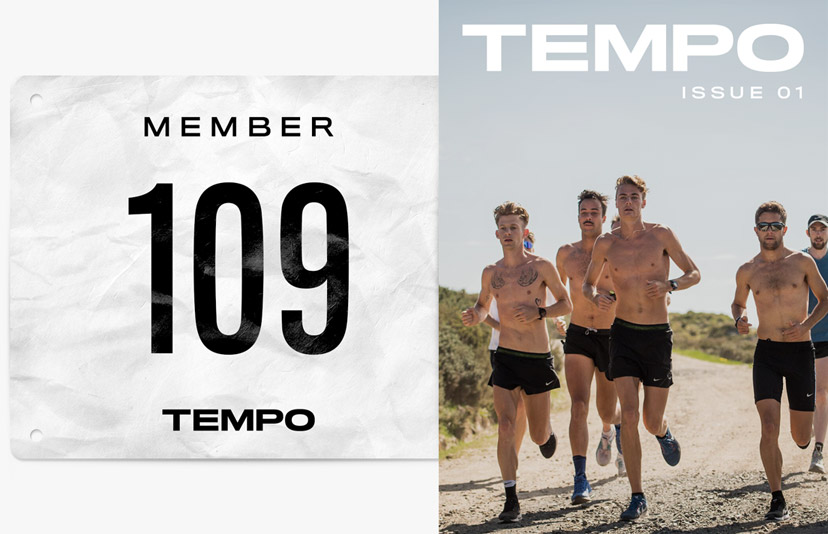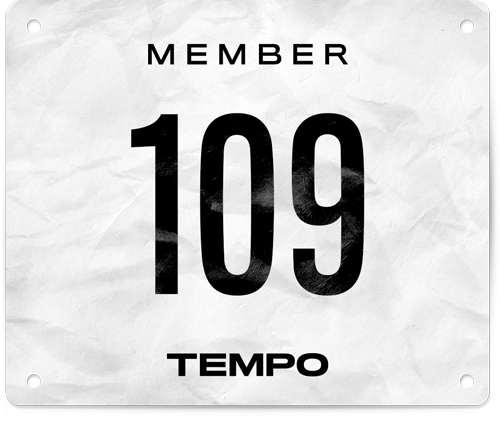Performance
XC: Running’s Open Secret
The Muddy Madness of Cross Country
Cross country (XC) running. For some of us it conjures up nothing more than memories of forced participation in school, while for the purists it evokes tradition, camaraderie and everything that’s good about running.
I find the culture around XC fascinating. The fact that it still remains on the athletics calendar in many countries around the world is amazing to me. We’re in a period where the marathon is booming in popularity (thanks in part to people like Eliud Kipchoge and Brigid Kosgei, and also to the product wars being waged by the shoe companies), and track racing is also enjoying renewed interest from fans and participants. Australian talent at the elite level looks as promising as it has at any time in the last 20 years.
Maybe the summer track season, still almost half a year away but looming somewhere deep in the back of the mind, is what drives a lot of the athletes competing in XC. How else would you convince a 1,500m runner to run through the mud and over the hills in the middle of a Victorian winter?
“On an unseasonably warm and sunny day, 335 men and 138 women raced the open division 12-kilometre course through paddocks and over hills, traipsing through cow shit and mud in equal measure.”
Riley Wolff
All of this was on my mind as I drove to Cruden Farm, a sprawling patch of land around an hour from Melbourne, which was gifted to Elisabeth Murdoch (née Greene) by her new husband, Keith Murdoch, as a wedding present back in 1928.
This day was not my first time at an XC race, but it was my first time in a number of years and I was honestly shocked by what I saw. On an unseasonably warm and sunny day, 335 men and 138 women raced the open division 12-kilometre course through paddocks and over hills, traipsing through cow shit and mud in equal measure.
I’ve always thought it’s cool that our elite athletes show up and race XC when they’re not travelling. To have athletes like Stewy McSweyn, Jack Rayner, Linden Hall and others racing XC before they go and start their Diamond League seasons is pretty special. Not just because it provides real-world inspiration for the next generation who get to watch them race but also because it acts as a valuable endorsement of XC itself.
Take Andy Buchanan, who won the open men’s race. Two months ago, he ran his debut marathon in Hamburg, clocking a 2:12:23 to make Australian athletics fans stand up and take notice. He’s long been an elite level talent, but I think even he would admit he’s an under-the-radar operator. But on this day at Cruden Farm, no one cared what he had done on the roads; he was simply another member of the Bendigo Region team (Andy represents Bendigo University, but over winter the four Bendigo clubs run together as the Bendigo Region).
I asked Andy what makes XC racing special for him when he could be out hammering another training session on the roads or doing something closer to home. Almost instantly, the concept of “team” came up.
“The team aspect is what sets XC apart. There is such good buy-in from so many different clubs and it creates an environment that I've never seen before. Whenever I finish an XC race, I'm always watching the finish to see where my five other teammates have finished, while keeping a count on other clubs and how many runners they have across the line. It's very unique and, while I'm running, I'm mostly thinking of how my result will affect the team.”
Running is, for the most part, a solo pursuit. Most people train alone or in small groups, and do their own specific training. Most events are individual, and outside of a couple of track relays, team events in running feel gimmicky. XC on the other hand, is anything but. It is both an individual and a team sport; runners are judged on individual times and teams by a points-scoring method. And you can’t help but feel a sense of tradition when you’re around it – it’s not just that the courses and the clubs are (mostly) the same as they’ve been for decades, it’s the make-up of the people who compete and the spirit in which they do so.
While the team element came through for everyone I spoke to, they each had their own reasons for racing. For some, XC offers an opportunity to work on their strength – something they hope to carry over to track or road running. For others it’s about getting in tune with their body during a race rather than focusing on lap splits and running to a clock – clocks don’t mean much in XC. And then there are the hidden stories, the ones that most of us have deep down somewhere but rarely, if ever, share with others.
Eugene Nemesi runs for the Collingwood Harriers, and has been for the past six seasons. Now in his mid-40s, Eugene’s not up the front with Andy Buchanan, but that hardly matters – Eugene runs with a deeper purpose than just competing.
“Running for me is my mental health saviour. I have now for a quarter of a century been managing quite a serious mental health condition … Running (particularly XC) has been a massive help. The routine of the sport combined with being amongst nature, travelling to venues, and the challenges posed, make for a very uplifting and positive experience.
“I can lose myself in XC, it's my time, whereas with track running you are on display and you feel like everyone can see you.”
At the other end of the spectrum, 20-year-old Saskia Lloyd is racing her first season in the open division for the St. Stephen’s Harriers, having raced XC from the age of eight. She’s racing for a number of reasons, including to help her build strength for track season later in the year.
Andy Buchanan, Eugene Nemesi, Saskia Lloyd – all racing over the same course, at the same time, for entirely different reasons but linked together by their passion for XC. But perhaps there is a common thread for Saskia and Eugene. Like Eugene, Saskia welcomes the opportunity to be away from the intense focus of the track.
“I like XC because the focus is on the race itself. I like how different courses suit different strengths due to the terrain. It’s a nice change from such time-oriented goals in the track season.
“I also really value the team aspect. It gives it such a special vibe compared to the track. In such an individual sport, running with SSH brings a fun atmosphere to race day.”
Crossing the line second in the open women’s division at Cruden Farm was friend of TEMPO Melissa Duncan. Melissa, who represented Australia at the 2019 World Cross Country Championships in Århus, Denmark, is spending the winter focusing on building her strength for an attack on track season later in the year.
It’s fair to say Melissa has experienced a lot in running – from the track and field World Championships to spending two years living in Japan, she’s seen a lot. Still, Melissa is quick to point out the inclusivity of XC as important to its fabric.
“I love the team camaraderie that’s not limited just to direct teammates – it’s everyone being in it together. I also love the general encouragement of everyone competing and the inclusivity of it – we’re all out there together.”
There’s no doubt Melissa wants to get back to where she’s been: winning national titles and representing her country. Whereas, as we’ve already heard, athletes like Eugene Nemesi or even Saskia Lloyd have different reasons for being out there.
XC, it appears, can be many things to many people.
When watching the race, it’s obvious that athletes such as Melissa Duncan (or Georgia Hansen, the winner of the women’s race) stand out. They’re efficient and seem to almost run on top of the ground, where many amateurs appear to sink into it. Regardless, they’re still out there running the same course as everyone else, and after 10 minutes of racing it’s virtually impossible to tell who’s where and who’s winning, in direct contrast to a track event where gaps in class are blinding. But whether you’re the fastest or slowest runner in the field, at some point in the race, if you look beside you, you’ll see Andy Buchanan, or Georgia Hansen or Melissa Duncan, running next to you. It might last a second, it might last 20 seconds, but in that moment you’re in it together.
Simon Hanns doesn’t look like your typical XC runner. Which is a funny thing to say, because if there’s one thing I’ve found at XC it’s that there is no such thing as a typical runner. I’m not sure if it’s the tattoos or the fact that he co-founded the fashionable running brand Erniold, or that I’ve seen him at other, more hyped events on the running calendar, but Simon’s a cool guy. And here he is on a Saturday afternoon throwing down in XC when he could be throwing down pots at a pub in Brunswick, telling me about bands that don’t exist yet. He didn’t grow up running XC, and his refreshing rawness stands out among the people I speak to.
“I love the carnage of it – you only had to see the start line today to know how that is. The depth is also incredible.
“Track and road racing is very controlled: you know the shape you’re in, you have splits you want to hit and you rely on your watch data. XC is all about running to feel: just racing and aiming to hold on. On any given day you could have a good one or a shit one, and you use the XC racing to get you strong and fit for goal road races.”
Speaking with Simon, I start to feel like XC is this well-held secret that only lifelong club runners (and Simon) know about. I’ve got literally hundreds of friends in Melbourne running, and most of them have probably never seen a XC race.
Part of me feels like Nathan Pearce is the type of person who can bridge the gap between the established club runner scene and those who haven’t yet experienced it. Just 26 years old, he’s been running XC for 17 years and has competed at every level: from school to club, national and even the international level. I’ve known Nathan for a few years and, while he’s clearly an elite talent, he retains a great ability to relate to amateur runners at the start of their journeys.
“XC is something that I think all types of runner should get into – there’s definitely less pressure and intensity than the track, and it’s really a challenge against yourself more so than the other competitors.
“I think the community spirit and vibe of XC is something you don’t get in any other type of running.”
I started this story, and the trip to Cruden Farm, looking to find the secret that cross country runners knew but I didn’t. The one reason they all ran week after week and season after season. Of course, I found out it’s much more nuanced than that. Even so, I didn’t expect to find six runners with six different motivations for racing. While I only spoke to the six athletes mentioned in this story, I saw hundreds of athletes taking part, no doubt each with their own story and reason for being there.
That’s the beauty of it, and why people keep coming back year after year. There’s always something to take, and always something to gain, from an XC race.


